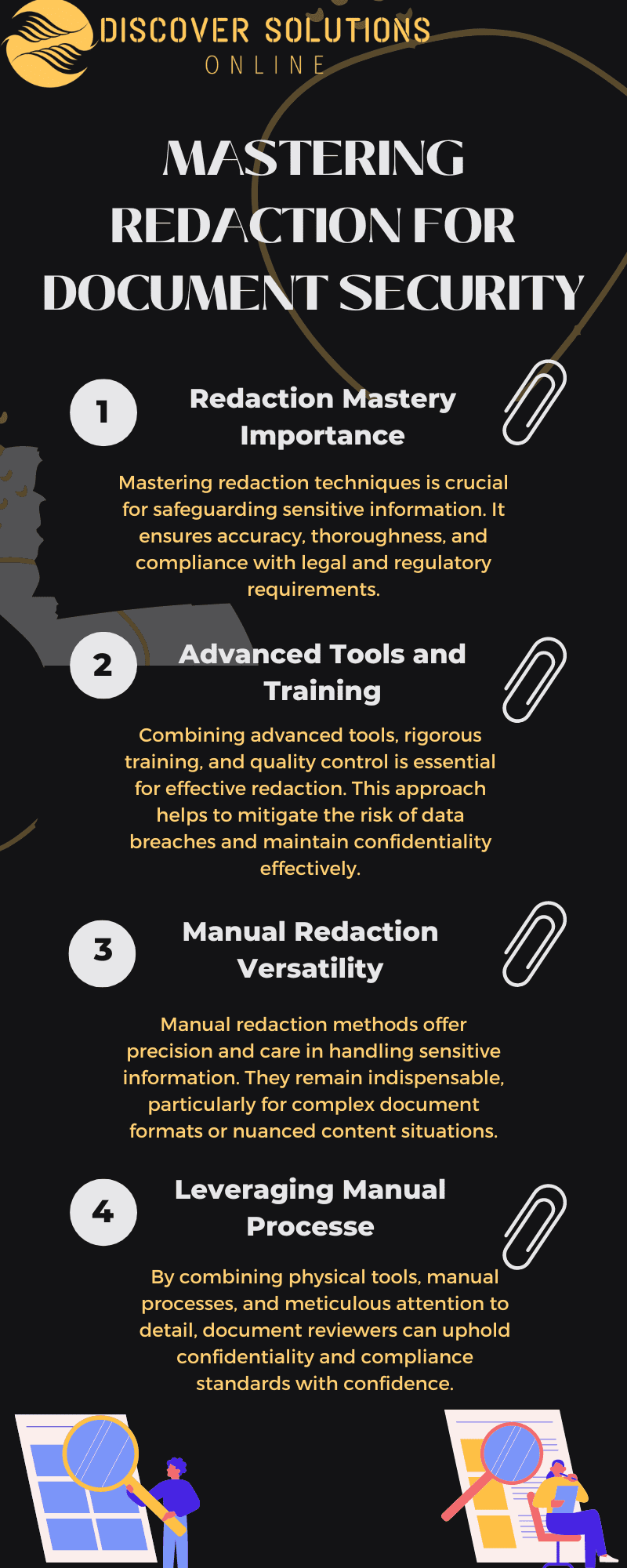In the world of document review, the significance of redaction cannot be overstated. It stands as a pivotal process that ensures sensitive information remains confidential and protected from unauthorized access. Redaction serves as a shield, safeguarding critical data from falling into the wrong hands while allowing legitimate users to access necessary information securely. In this segment, we delve into the core importance of redaction in document review processes, exploring its multifaceted role and the impact it has on organizational security and compliance.
Understanding the Vitality of Redaction in Document Review
In document review, redaction is an essential safeguard. It ensures sensitive information is securely hidden before sharing documents. This protects confidential details like Social Security numbers, trade secrets, or private communications. Redaction prevents inadvertent disclosure during legal proceedings, mergers, or public records requests. By meticulously redacting sensitive data, reviewers guarantee only necessary information is revealed, fostering trust and upholding privacy throughout the document handling process.
Preserving Confidentiality
One of the primary reasons for incorporating redaction in document review is to preserve confidentiality. Organizations handle a plethora of sensitive information, ranging from personal identifiers to proprietary data. Failure to adequately redact such information can lead to severe consequences, including breaches of privacy, legal liabilities, and damage to reputation. By systematically identifying and obscuring sensitive content, redaction ensures that only authorized individuals have access to the information they need, thereby mitigating the risk of inadvertent exposure.
Compliance Requirements
Regulatory compliance is a cornerstone of modern business operations, particularly in industries such as healthcare, finance, and legal services. Various regulations mandate the protection of sensitive data, imposing stringent requirements on organizations to implement robust security measures. Redaction plays a crucial role in meeting these compliance standards by enabling organizations to redact personally identifiable information (PII), protected health information (PHI), and other confidential data before sharing documents internally or with external parties. By adhering to regulatory guidelines through effective redaction practices, organizations can avoid penalties, audits, and reputational damage.
Mitigating Legal Risks
In legal proceedings, the disclosure of privileged or confidential information can have far-reaching consequences. Attorneys, paralegals, and legal professionals rely on redaction to selectively conceal sensitive content within legal documents, such as court filings, contracts, and discovery materials. Failure to redact confidential information can jeopardize attorney-client privilege, compromise litigation strategies, and undermine the integrity of legal proceedings. By employing precise redaction techniques, legal teams can minimize the risk of inadvertent disclosures, protecting the interests of their clients and upholding the principles of confidentiality and privilege.
Protecting Intellectual Property
Intellectual property (IP) represents a valuable asset for many organizations, encompassing trade secrets, patents, trademarks, and copyrights. Unauthorized disclosure of IP-related information can result in financial losses, competitive disadvantages, and loss of market share. Redaction serves as a frontline defense mechanism, allowing organizations to safeguard their intellectual property by selectively concealing sensitive details in documents, research reports, and technical specifications. Whether it’s redacting proprietary algorithms or confidential product designs, robust redaction practices help maintain the confidentiality and competitiveness of intellectual assets.
Enhancing Data Security
In an era marked by cybersecurity threats and data breaches, protecting sensitive information has become paramount. Document repositories, file-sharing platforms, and collaborative environments pose inherent security risks if proper redaction measures are not implemented. By redacting sensitive information at the source, organizations can minimize the risk of unauthorized access, data leakage, and cyber threats. Redaction complements broader cybersecurity strategies by ensuring that confidential data remains encrypted, obscured, or removed from documents before they are disseminated or archived.
Facilitating Effective Collaboration
Collaboration is essential for driving innovation, fostering teamwork, and achieving organizational goals. However, sharing documents across teams, departments, or external partners can expose sensitive information to unintended recipients. Redaction enables seamless collaboration by allowing users to share documents with confidence, knowing that sensitive content has been appropriately obscured. Whether collaborating on research projects, drafting contracts, or conducting internal reviews, redaction promotes transparency while safeguarding confidentiality, thereby facilitating productive collaboration across diverse stakeholders.
Building Trust and Credibility
Trust is the cornerstone of successful business relationships, whether with customers, partners, or stakeholders. By demonstrating a commitment to protecting sensitive information through rigorous redaction practices, organizations can instill confidence and credibility among their constituents. Clients are more likely to entrust their sensitive data to organizations that prioritize security and confidentiality, fostering long-term relationships based on mutual trust and respect. Redaction, therefore, serves as a tangible expression of an organization’s dedication to ethical conduct, data protection, and regulatory compliance.

Different Methods for Manual Redaction
Redaction, the process of obscuring or removing sensitive information from documents, is a critical task in document review, particularly for professionals handling confidential or sensitive material. While digital tools have made redaction more efficient, manual redaction methods remain indispensable in certain scenarios. In this section, we delve into various manual redaction techniques that document review professionals can employ to ensure accuracy and compliance.
Physical Redaction Pens
Traditional yet effective, physical redaction pens offer a simple solution for manual redaction. These pens contain dark, opaque ink that can be used to manually black out sensitive information on printed documents. While this method may seem rudimentary, it provides a tangible sense of control over the redaction process. However, it’s essential to ensure that the ink used is truly opaque to prevent any possibility of information leakage.
Redaction Stickers
Redaction stickers, also known as redaction labels or seals, are adhesive labels designed specifically for obscuring sensitive information on paper documents. These stickers come in various sizes and shapes, allowing document reviewers to cover specific sections or entire paragraphs with ease. Redaction stickers are particularly useful for preserving the legibility and integrity of the document while concealing sensitive data.
Manual Masking
Manual masking involves physically covering sensitive information with opaque materials such as paper or tape. This method allows document reviewers to precisely control the areas to be redacted while preserving the overall layout and structure of the document. Manual masking can be particularly effective when dealing with irregularly shaped or sensitive content that traditional redaction tools may struggle to handle.
Cut-and-Paste Redaction
Cut-and-paste redaction involves physically cutting out sections of a document containing sensitive information and pasting them onto a separate sheet of paper before shredding or securely disposing of the original. While this method may seem labor-intensive, it ensures complete removal of sensitive data from the document, leaving no room for accidental disclosure. Document reviewers must exercise caution to avoid damaging the document during the redaction process.
Opaque Overlays
Opaque overlays, typically made of plastic or paper, are placed over sensitive information to obscure it from view. These overlays can be customized to fit specific document layouts and are particularly useful for redacting multiple sections or columns simultaneously. Opaque overlays provide a non-destructive redaction method that allows for easy adjustment and correction as needed.
Handwritten Redaction
Handwritten redaction involves manually obscuring sensitive information using a pen or marker. While seemingly straightforward, this method requires precision and attention to detail to ensure complete coverage and legibility. Handwritten redaction is often used in conjunction with other manual redaction techniques to address finer details or annotations within the document.
Manual Annotation
Manual annotation involves adding notes or comments to a document to provide context or clarification while redacting sensitive information. Document reviewers can use symbols, abbreviations, or color-coded markings to denote the reasons for redaction or highlight areas requiring further scrutiny. Manual annotation enhances communication and collaboration among document review teams, facilitating a more thorough and transparent redaction process.
Manual Indexing
Manual indexing involves creating a detailed index or log of redacted information within a document to facilitate retrieval and reference. Document reviewers can use spreadsheets, databases, or handwritten logs to track redacted sections, reasons for redaction, and relevant metadata. Manual indexing ensures accountability and auditability throughout the redaction process, enabling efficient document management and compliance verification.
Best Practices for Ensuring Accurate and Thorough Redactions
Redaction is a critical aspect of document review, particularly in industries where sensitive information must be protected. Whether you’re working in legal, healthcare, or government sectors, mastering redaction techniques is essential for safeguarding confidential data. However, achieving accuracy and thoroughness in redaction requires more than just basic knowledge of the tools available. It demands a nuanced understanding of best practices and a meticulous approach to the process. Here, we delve into key strategies to ensure your redactions are precise, reliable, and comprehensive.
Understand the Scope
Before diving into redaction, it’s vital to comprehend the scope of the information that needs to be protected. Conduct a thorough review of the document to identify all sensitive data, including personal identifiers, financial information, or classified material. Clearly defining the scope ensures no crucial details are overlooked during the redaction process.
Establish Redaction Policies
Develop standardized redaction policies and procedures within your organization to ensure consistency across all documents. These policies should outline which types of information require redaction, the approved redaction methods, and the protocols for handling redacted documents. Clear guidelines help maintain uniformity and minimize confusion among document reviewers.
Train Reviewers Thoroughly
Proper training is indispensable for document review professionals tasked with redaction duties. Provide comprehensive training sessions that cover various redaction techniques, the effective use of redaction software, and guidelines for handling sensitive information securely. Regular refresher courses can also help reinforce best practices and keep reviewers up-to-date with the latest advancements in redaction technology.
Employ Quality Control Measures
Implement robust quality control measures throughout the redaction process to catch any overlooked sensitive data or inaccurately redacted information. This may involve conducting multiple rounds of reviews by different reviewers, utilizing random sampling techniques, or employing automated validation checks within the redaction software. Quality control ensures that redacted documents meet the highest standards of accuracy and confidentiality.
Verify Redactions Before Finalization
Before finalizing redacted documents, always verify the accuracy of the redactions to mitigate the risk of inadvertent data exposure. Reviewers should meticulously inspect each redacted section to ensure that no sensitive information remains visible or retrievable. Additionally, conduct thorough testing of the redacted documents to confirm that the intended recipients cannot access the redacted content through any means.
Adhere to Legal and Regulatory Requirements
Compliance with relevant legal and regulatory requirements is paramount when redacting documents, especially in highly regulated industries such as healthcare and finance. Familiarize yourself with applicable laws, such as the Health Insurance Portability and Accountability Act (HIPAA) or the General Data Protection Regulation (GDPR), and ensure that redaction practices align with these mandates. Failure to comply with regulatory standards can result in severe penalties and reputational damage.
Maintain Document Integrity
While redaction aims to conceal sensitive information, it’s essential to preserve the integrity and readability of the remaining content. Avoid over-redacting, which can render documents incomprehensible or obscure relevant details. Strike a balance between thoroughness and clarity, ensuring that redactions effectively protect confidential information without compromising the document’s overall meaning or usefulness.
Secure Redacted Documents Properly
Once documents have been redacted, it’s crucial to store and transmit them securely to prevent unauthorized access or disclosure. Utilize encryption protocols when sharing redacted documents electronically and implement access controls to restrict viewing privileges only to authorized individuals. Additionally, establish protocols for securely disposing of any physical copies of redacted documents to prevent data breaches.
Regularly Update Redaction Practices
The landscape of data privacy and security is constantly evolving, with new threats and regulations emerging regularly. Stay proactive by staying abreast of industry developments and updating redaction practices accordingly. Periodically review and refine redaction policies, incorporate feedback from document reviewers, and embrace emerging technologies to enhance the efficacy and efficiency of redaction processes.
Recognizing When Redaction is Necessary: Identifying Sensitive Information
In the fast-paced world of document review, mastering the art of redaction is a critical skill for professionals tasked with handling sensitive information. Whether you’re working in legal, governmental, or corporate sectors, the ability to identify and redact sensitive data accurately is paramount to safeguarding confidentiality, privacy, and compliance. But how do you recognize when redaction is necessary? Understanding what constitutes sensitive information and the potential risks associated with its exposure is the first step towards effective redaction strategies.
Effective redaction requires a comprehensive understanding of the nuances and complexities inherent in sensitive information. By recognizing the various forms and contexts in which sensitive data can appear, document review professionals can implement targeted redaction strategies to mitigate risks and uphold confidentiality. In the next section, we will explore best practices for redacting sensitive information efficiently and accurately, empowering professionals to master the art of redaction in document review workflows.
Sensitive information can manifest in various forms within documents, ranging from personally identifiable information (PII) to confidential business data and privileged communications. Recognizing these elements requires a keen eye and a thorough understanding of the context in which they appear. Here are some key indicators to help you identify sensitive information:
Personal Identifiers
One of the most common types of sensitive information, personal identifiers include names, addresses, phone numbers, social security numbers, driver’s license numbers, and birthdates. These details can pose significant privacy risks if disclosed without authorization, making them prime candidates for redaction.
Financial Data
Financial information such as bank account numbers, credit card numbers, financial transactions, and income statements are highly sensitive and subject to regulatory protections like GDPR, HIPAA, and PCI DSS. Unauthorized disclosure of financial data can lead to identity theft, fraud, and legal liabilities, necessitating thorough redaction measures.
Medical Records
Protected health information (PHI) contained in medical records must be handled with extreme care to comply with healthcare privacy laws like HIPAA. PHI includes diagnoses, treatment information, medical history, and any other details that could reveal an individual’s health status. Redacting PHI ensures patient confidentiality and prevents potential harm or discrimination.
Legal Privileges
Legal documents often contain privileged communications between attorneys and clients, such as attorney-client privilege or attorney work product. Identifying and redacting privileged information is crucial to preserving confidentiality and upholding legal ethics standards.
Trade Secrets and Intellectual Property
Confidential business information, trade secrets, and intellectual property (IP) are valuable assets that require protection from unauthorized disclosure. Redacting proprietary details in contracts, patents, or internal documents helps prevent competitive advantage loss and safeguard corporate interests.
Sensitive Government Information
Government documents may contain classified or sensitive information subject to national security regulations. Recognizing and appropriately redacting such information is essential to prevent unauthorized access or disclosure that could compromise public safety or national interests.
Social Media and Digital Footprints
In the digital age, sensitive information extends beyond traditional documents to include online activities, social media posts, and digital footprints. Identifying and redacting personally identifiable details in digital content is crucial to mitigate privacy risks and prevent identity theft or online harassment.
Cultural Sensitivities and Ethical Considerations
Beyond legal and regulatory requirements, document review professionals must also consider cultural sensitivities and ethical considerations when identifying sensitive information. Certain topics or disclosures may have profound personal or societal implications, requiring careful handling and redaction to avoid unintended harm or offense.
How Discover Solutions Online Enhances Redaction Mastery
With the resources available on Discover Solutions Online, document review professionals can enhance their proficiency in redaction techniques, mitigate the risk of data breaches, and streamline their workflow with confidence. Whether you’re a legal expert, compliance officer, or information governance specialist, Discover Solutions Online serves as a trusted ally in mastering the intricacies of redaction within document review processes.
Understanding the Importance of Redaction in Document Review
Redaction is a pivotal aspect of document review, ensuring confidentiality and compliance with legal regulations. At Discover Solutions Online, we emphasize the significance of redaction in maintaining document integrity and protecting sensitive information.
Exploring Different Manual Redaction Methods
While automated tools exist, manual redaction offers precision and control. We provide in-depth insights into various manual redaction methods, from traditional markers to digital techniques, empowering users to choose the most suitable approach for their needs.
Implementing Best Practices for Accurate Redactions
Achieving accurate and thorough redactions requires attention to detail and adherence to best practices. Discover Solutions Online equips document review professionals with practical strategies for proper redaction markup, double-checking for missed redactions, and securely handling redacted documents to prevent data exposure.





